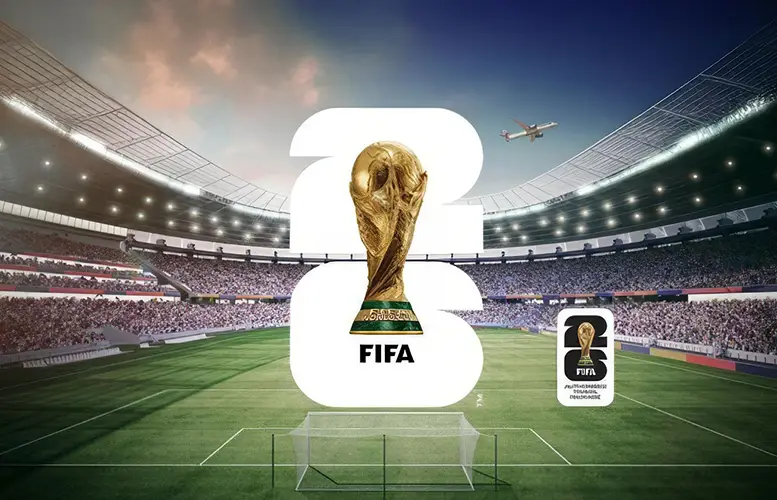
The FIFA World Cup 2026 is going to be unlike what we’re used to, and it already promises to be thrilling. Instead of the games being held in one country across a few cities, it’ll be held in sixteen cities across three countries. These include the USA, Mexico, and Canada. It’ll also feature 48 teams, surpassing the 2022 World Cup by 16 teams, playing a total of 104 games.
While the games do not start till June 11th, 2026, die-hard football fans and adventure seekers are already drawing up itineraries. With the huge number of people expected to turn up in the host cities, it’s a smart decision to plan early. If you do not know how to start planning for the trip, our author, Kate Richardson, highlights everything you should put in place, from route mapping to budgeting.
Know Your Host Cities and Stadiums Used
As already established, the World Cup games will be held in sixteen cities across three countries, including the USA, Canada, and Mexico. Before you start route mapping, you must know the cities and the stadiums that will be used in the games.
USA
- Arlington, Texas – Dallas Stadium (94,000 capacity).
- Atlanta, Georgia – Atlanta Stadium (75,000).
- East Rutherford, New Jersey – New York New Jersey Stadium (82,500).
- Foxborough, Massachusetts – Boston Stadium (65,000).
- Houston, Texas – Houston Stadium (72,000).
- Inglewood, California – Los Angeles Stadium (70,000).
- Kansas City, Missouri – Kansas City Stadium (73,000).
- Miami Gardens, Florida – Miami Stadium (65,000).
- Philadelphia, Pennsylvania – Philadelphia Stadium (69,000).
- Santa Clara, California – San Francisco Bay Area Stadium (71,000).
- Seattle, Washington – Seattle Stadium (69,000).
Canada
- Vancouver – BC Place Vancouver (54,000 capacity).
- Toronto – Toronto Stadium (45,000)
Mexico
- Guadalupe – Estadio Monterrey (53,500 capacity).
- Mexico City – Estadio Azteca Mexico City (83,000).
- Zapopan – Estadio Guadalajara (48,000).
Plan Your Routes By Region
The number of cities involved can make it quite tricky in planning how to move. A solution to this is to play your movement by region. This will reduce your travel time and the expenses incurred in transportation. For instance, you can start in the West Region, holding cities such as Los Angeles, San Francisco, Seattle, and Vancouver. Then, you can move to the central region, holding Texas, Guadalajara, Houston, Kansas City, Monterrey, and Mexico City.
The East Region includes Atlanta, Miami, New Jersey, Philadelphia, and Boston. The one extra stop with a connection flight to either Boston or New York is Toronto. You’ll get to immerse yourself in the cultures of each region properly while following the games with ease.

Know The Match Schedules and Get Tickets Early
The tournament will run for five weeks, starting from June 11th and ending July 19th. Fixtures are on the official FIFA website, and you can use that to check for match passes to specific venues. Match passes are cheaper than single-match tickets for multiple games in a city. Hence, you should watch out for those and strive to get the tickets early. If you want to buy resale tickets, you should also use platforms approved by FIFA.
Transportation
Travelling through the cities in these countries will require buses, trains, car rentals, and flights. You’ll want flights to cover long distances, such as Vancouver to Mexico City. In such cases, you’ll save a lot of money using budget airlines such as Volaris or Flair.
Trains/Buses are great for shorter distances, such as Toronto to Montreal or Philadelphia to New York. Car rentals will come in handy for navigating through cities in the same region. You should use a multi-city flight ticket when booking international travel to reduce expenses.
Accommodation
You want to book accommodation six to twelve months ahead for the most affordable options. Options to explore include hotels, hostels (budget stays), Airbnb (travelling groups), and Fan villages (organized by FIFA or local tourism boards).
Budget
This trip won’t be cheap but you can make smart choices by travelling with travelling agencies who offer all-inclusive plans, from flights to accommodation and fan festivals.
Per person, the following are the estimated costs that’ll be incurred on the trip:
- Flights: $2,500 – $4,000.
- Accomodation: $4,500 for a month.
- Match tickets: $2,000 to $4,000, depending on games and seat category.
- Local transport and food: $1,500 to $2,500.
If you’re a bettor, you should also set aside a budget for the many games you’ll be betting on in this tournament. To analyze the teams and their chances, you can refer to the expert review on MightyTips to ensure they’re well-informed on participating teams and their winning chances.
Conclusion
As Franz Beckenbauer said, “The World Cup is a truly international event. It brings people together, uniting nations, races, and cultures.”
The 2026 World Cup promises to be an unforgettable experience and you can be part of with the right plan. So, start planning early and be ready to embrace each city’s energy.





